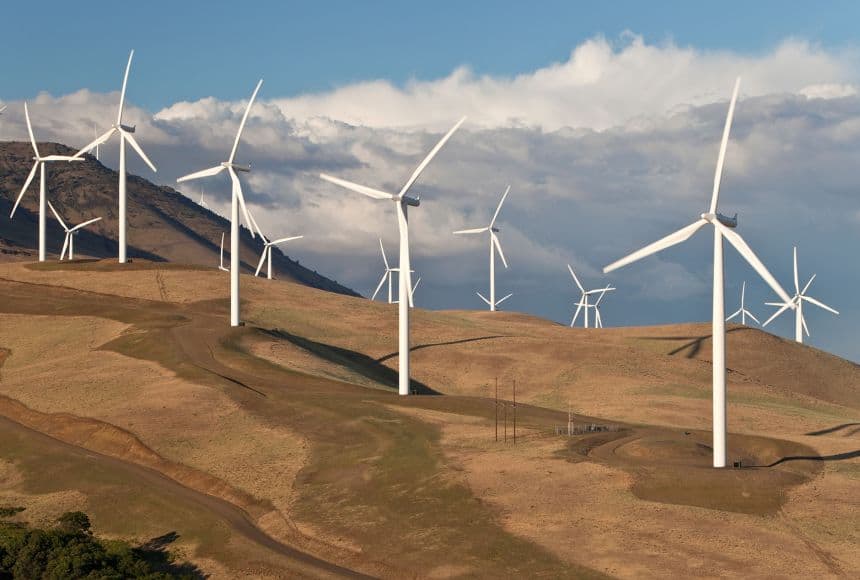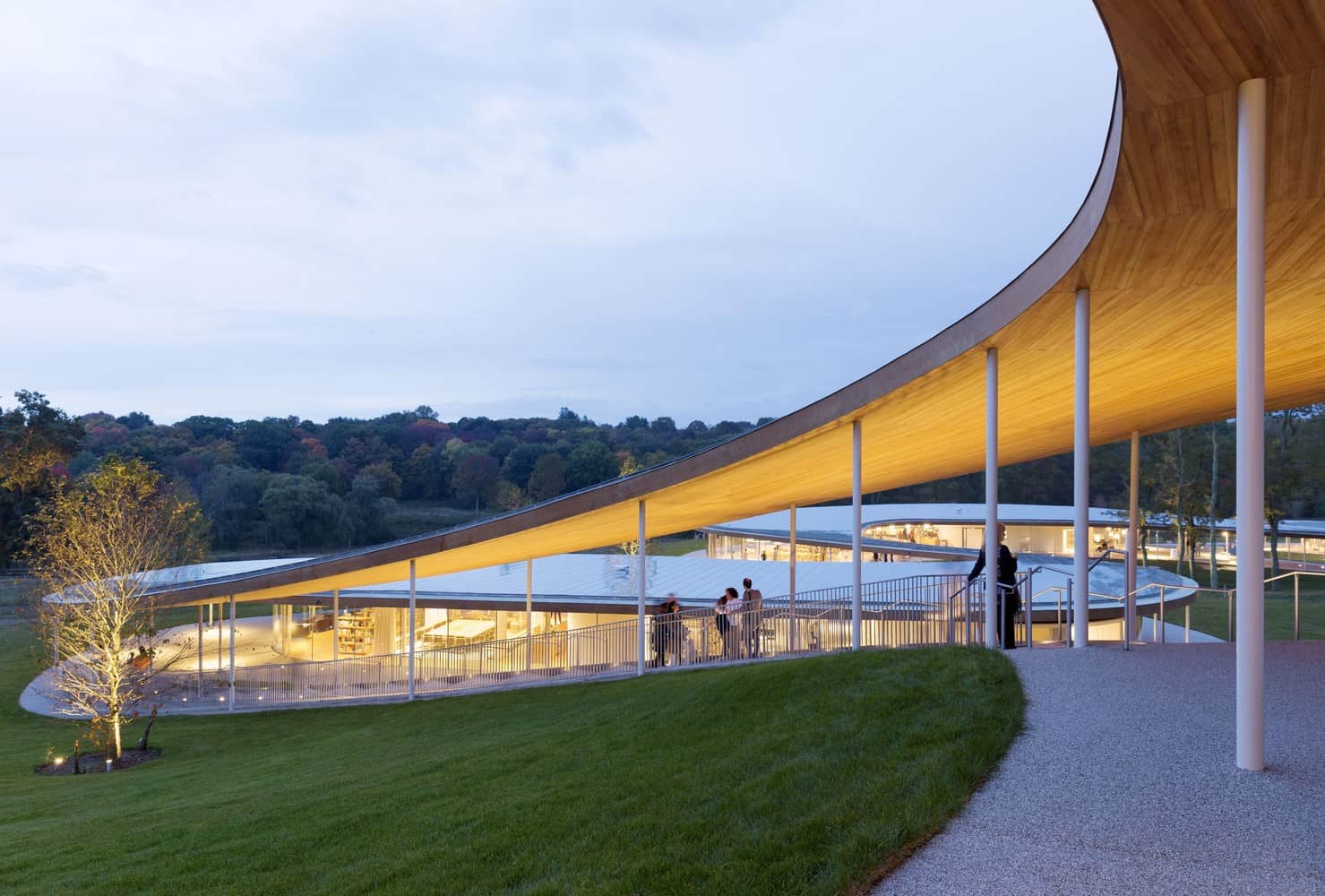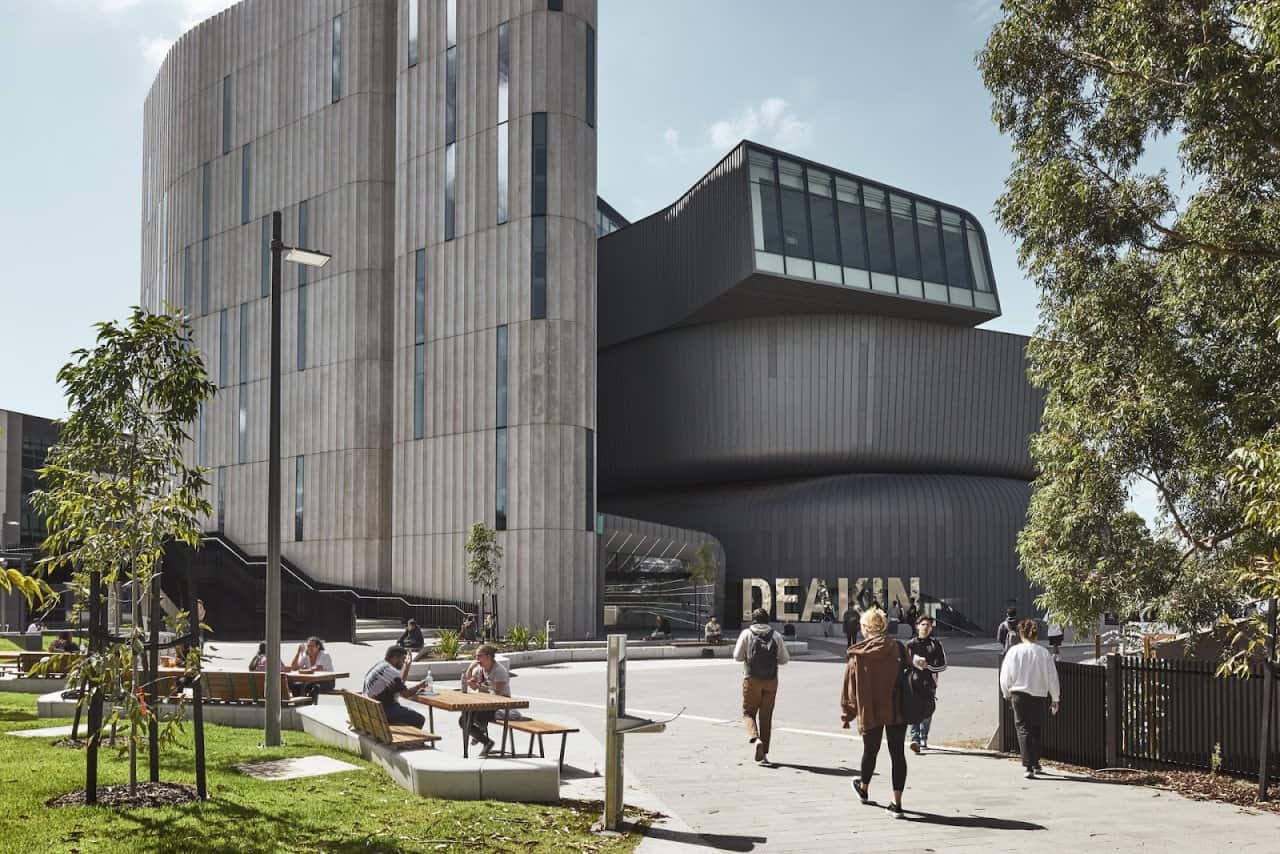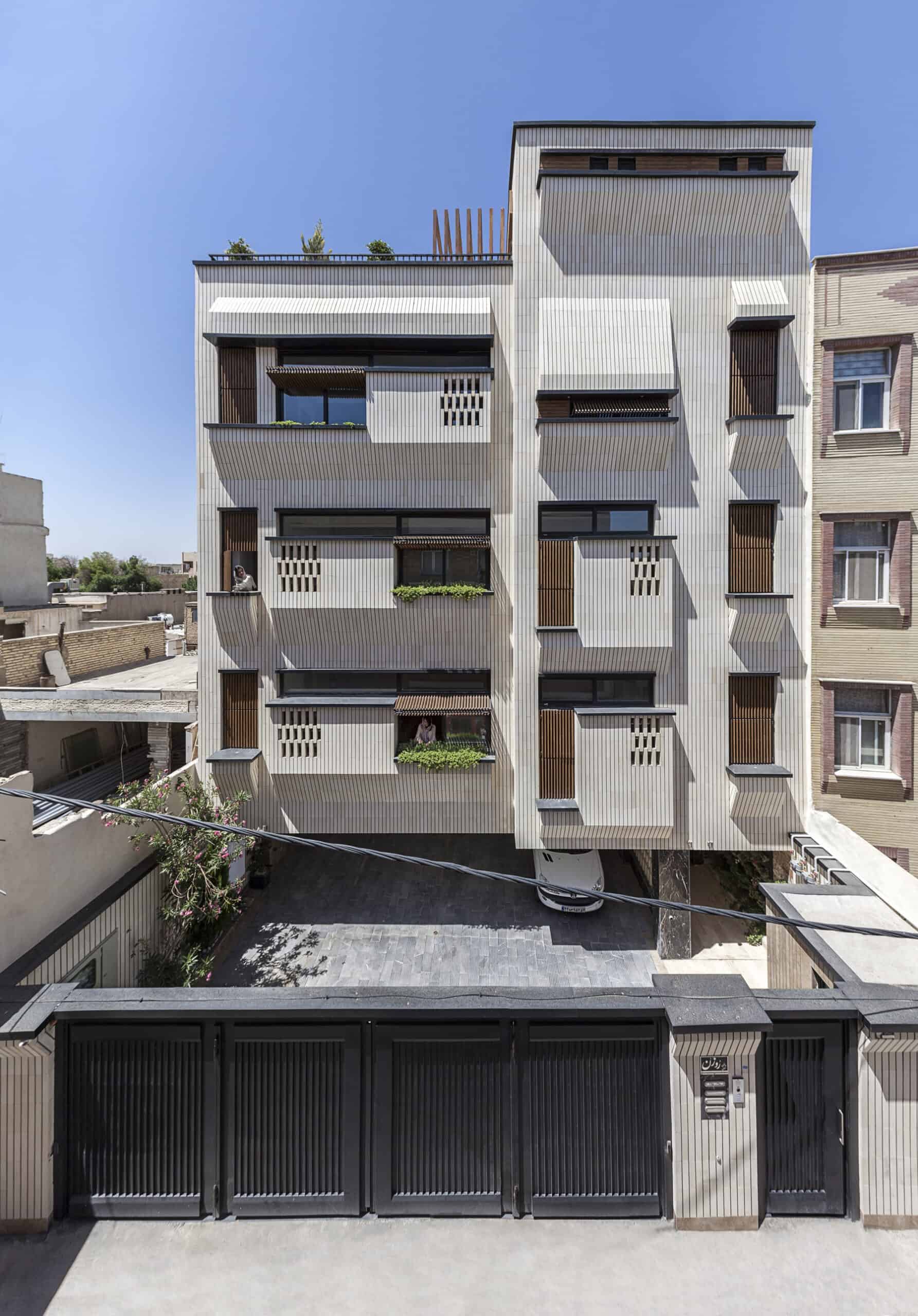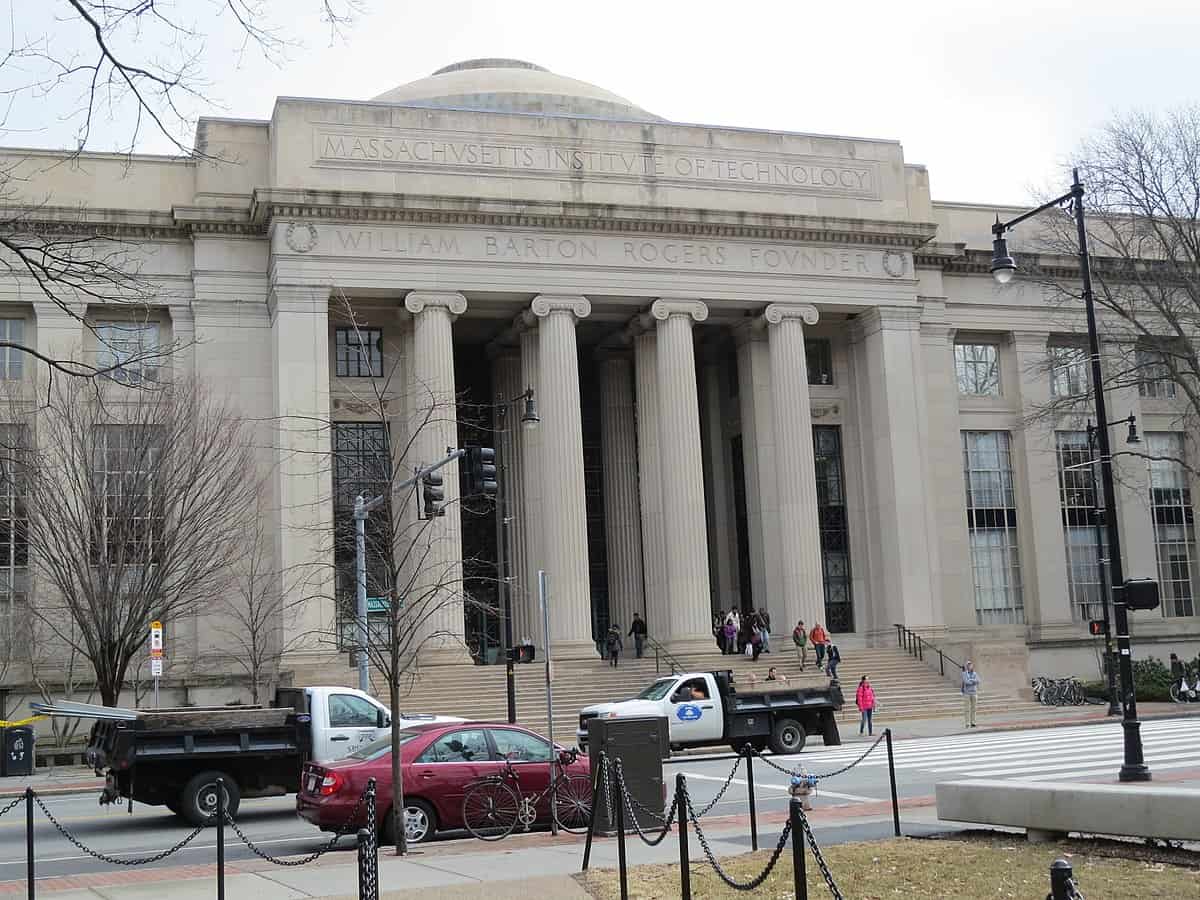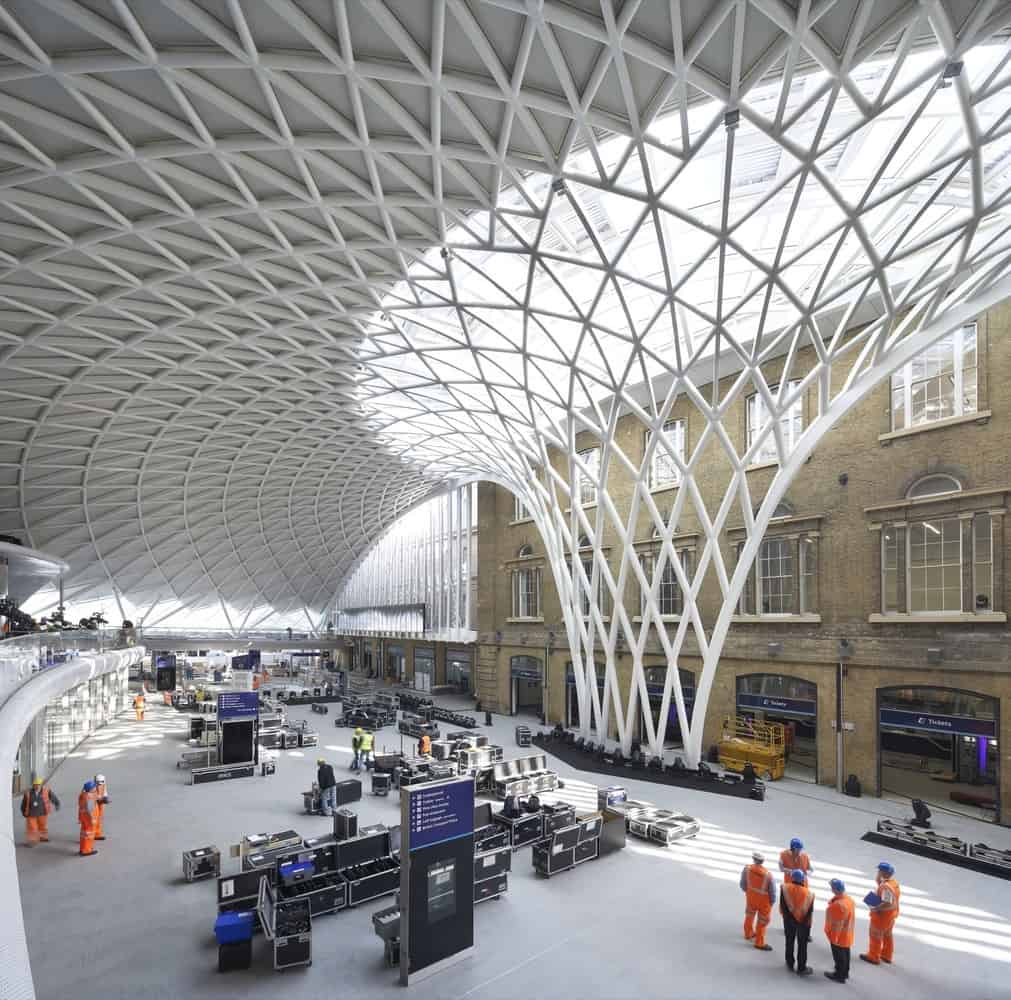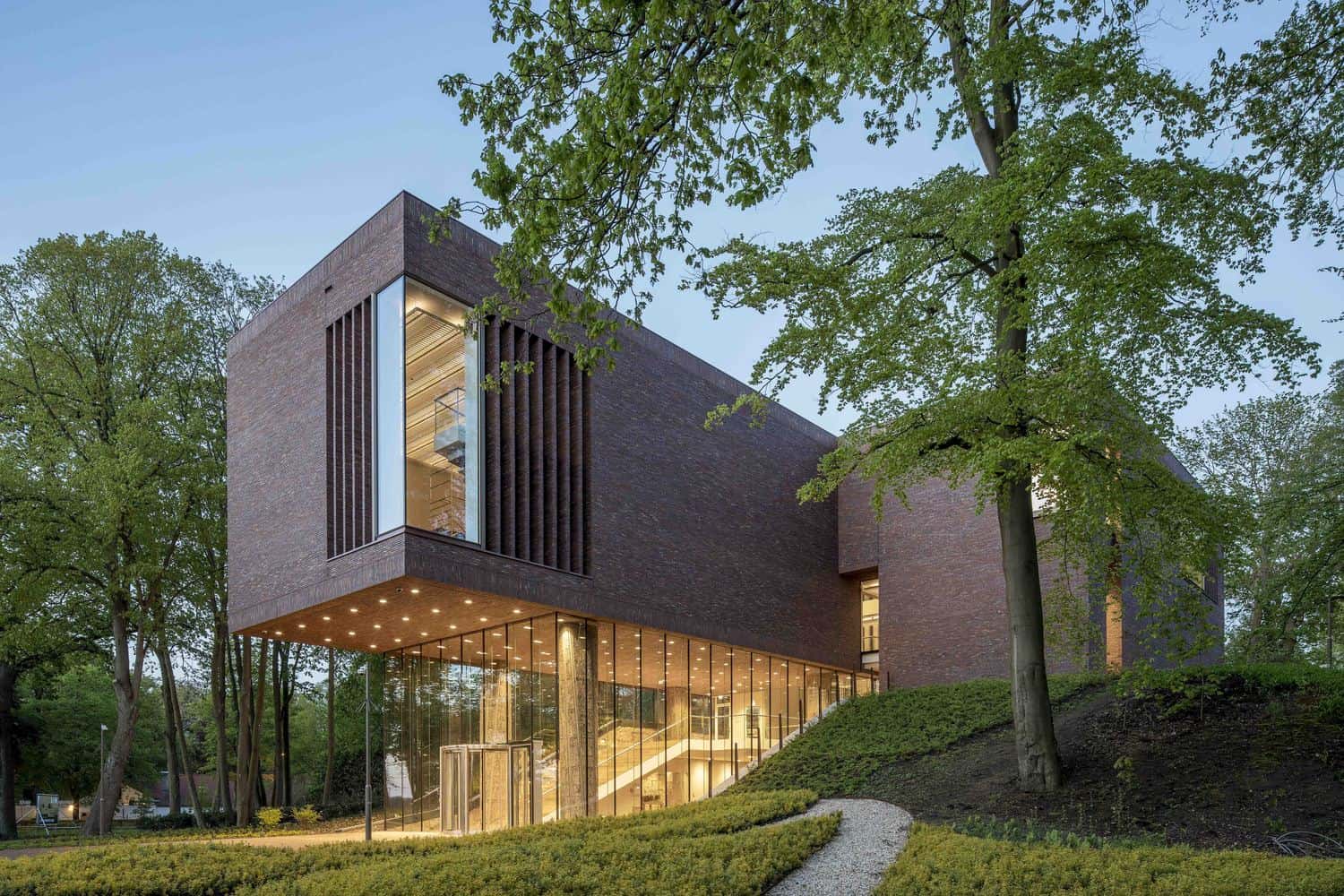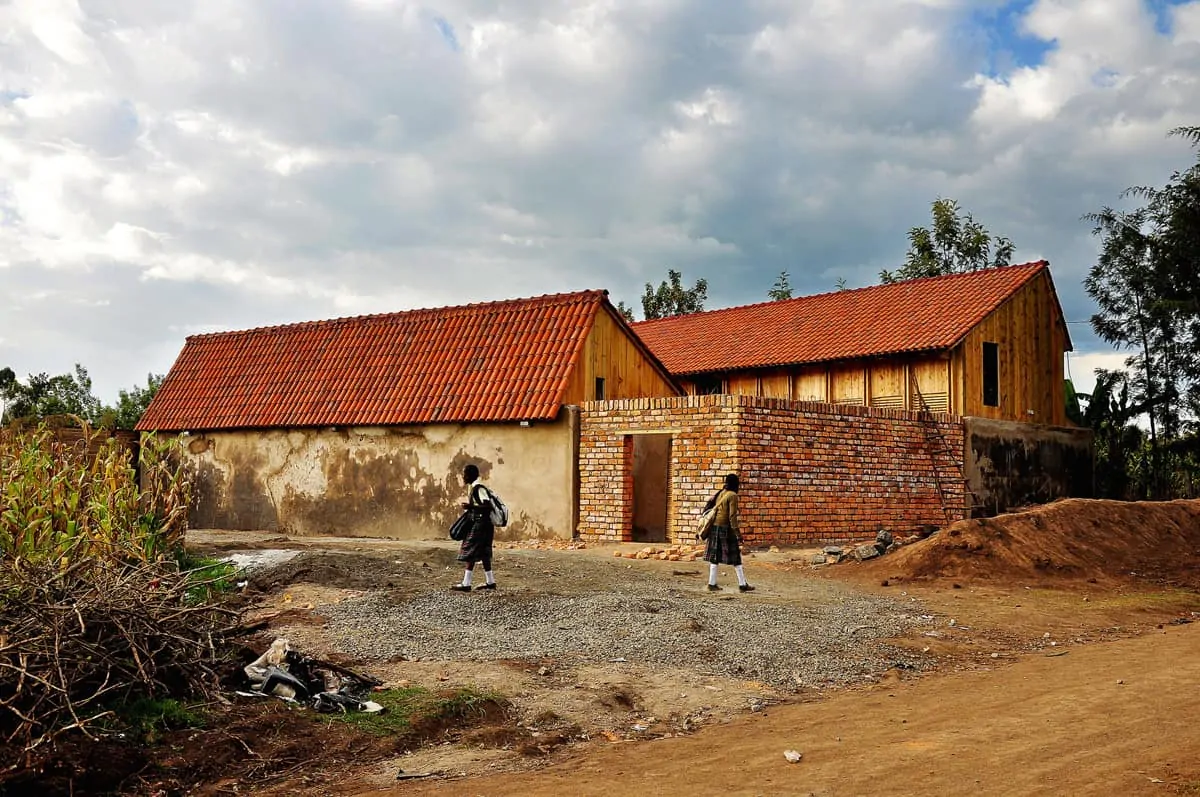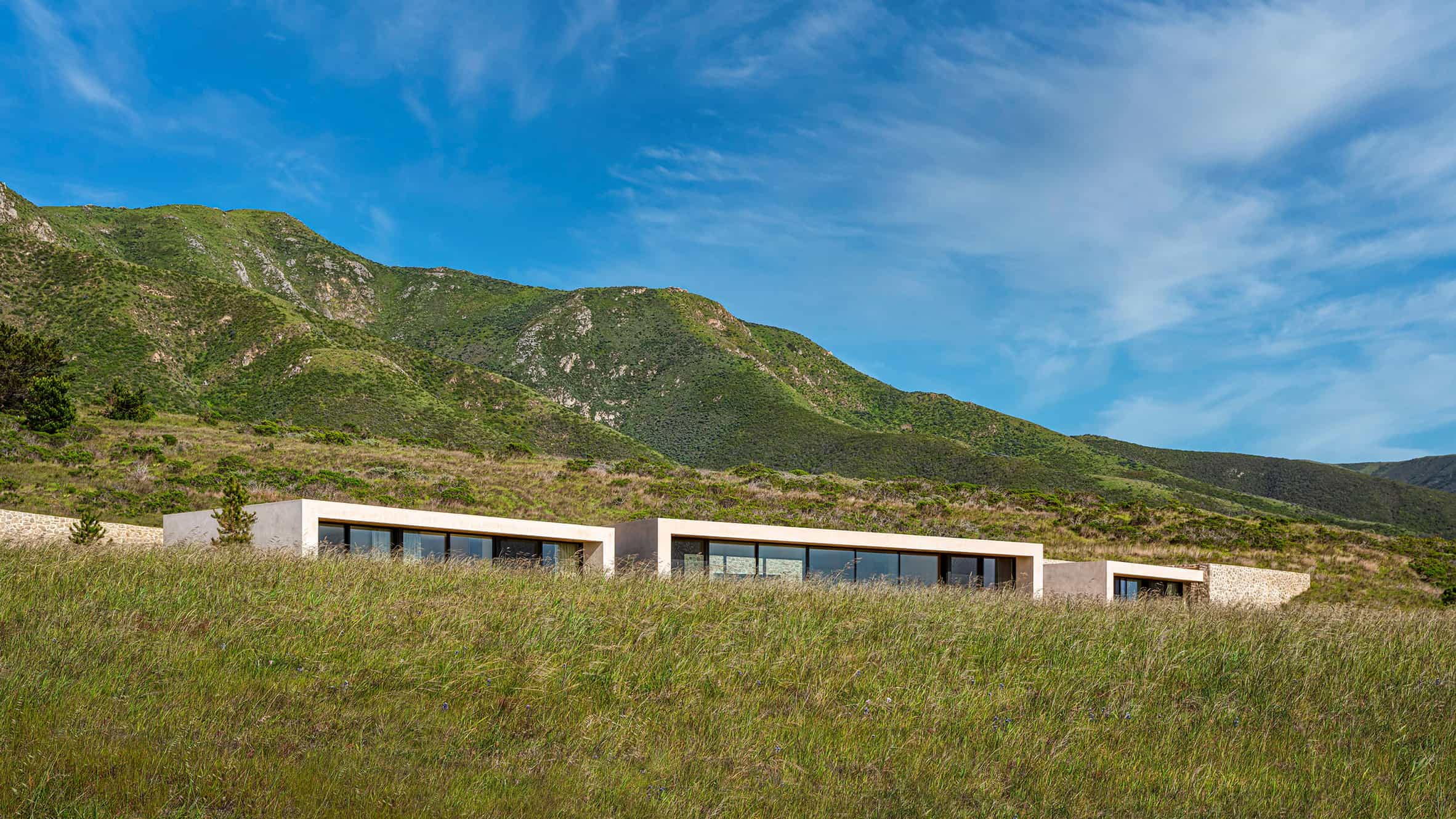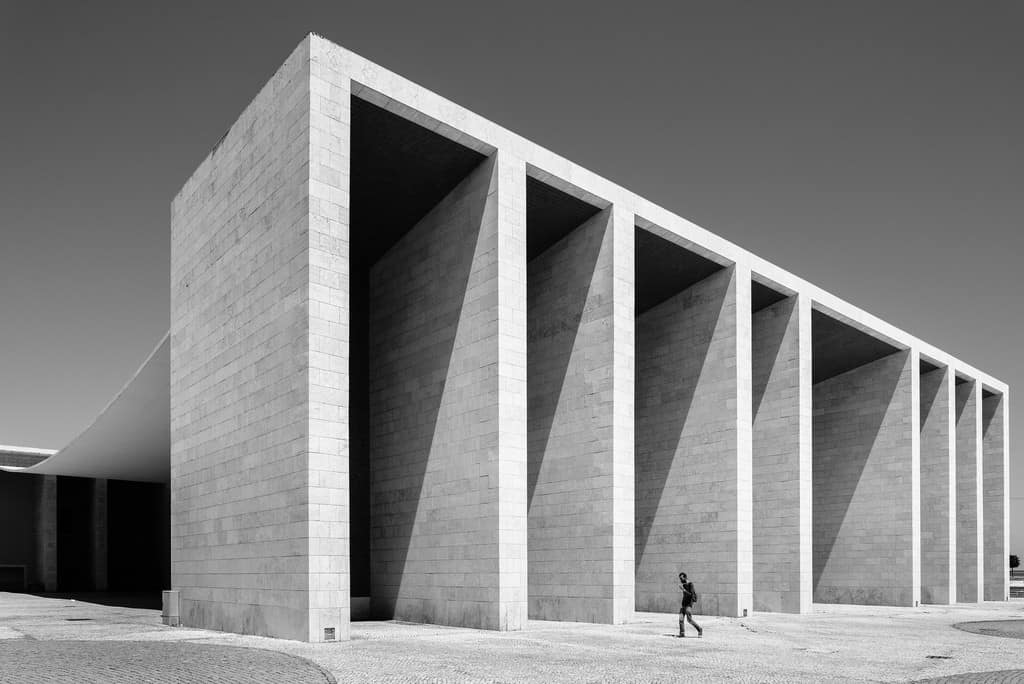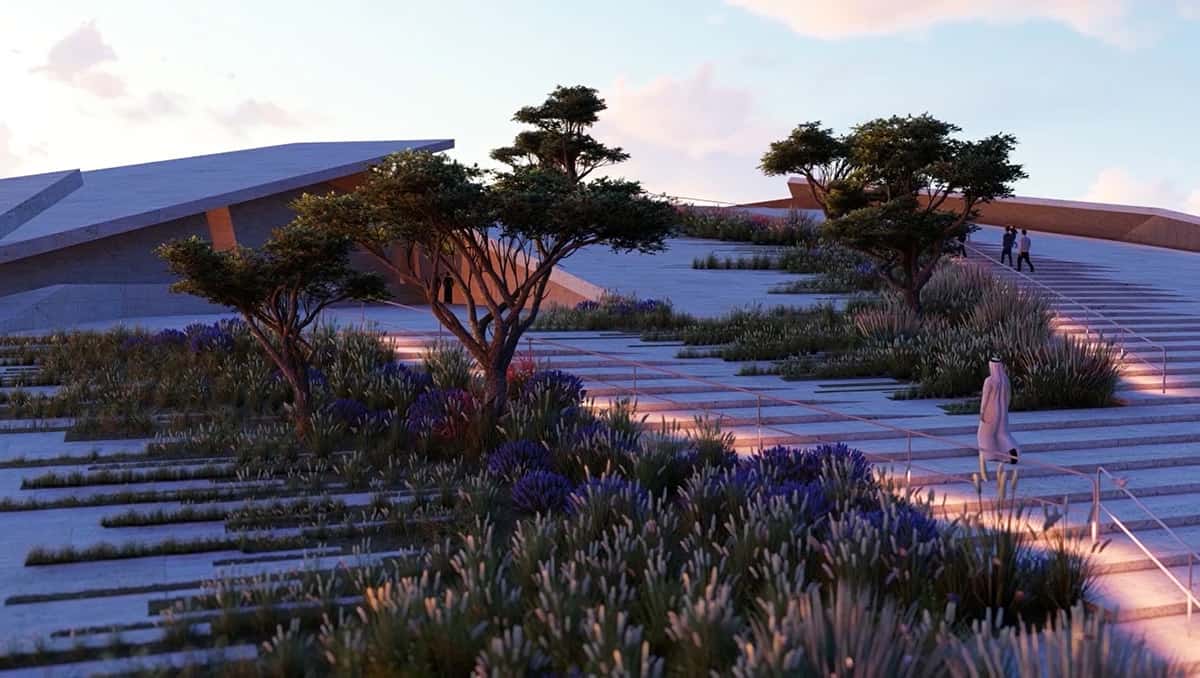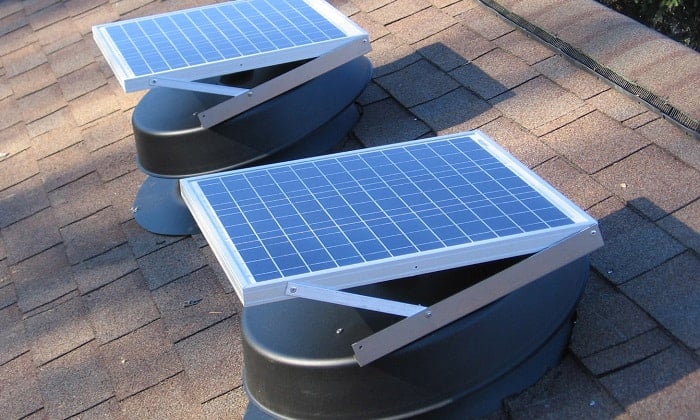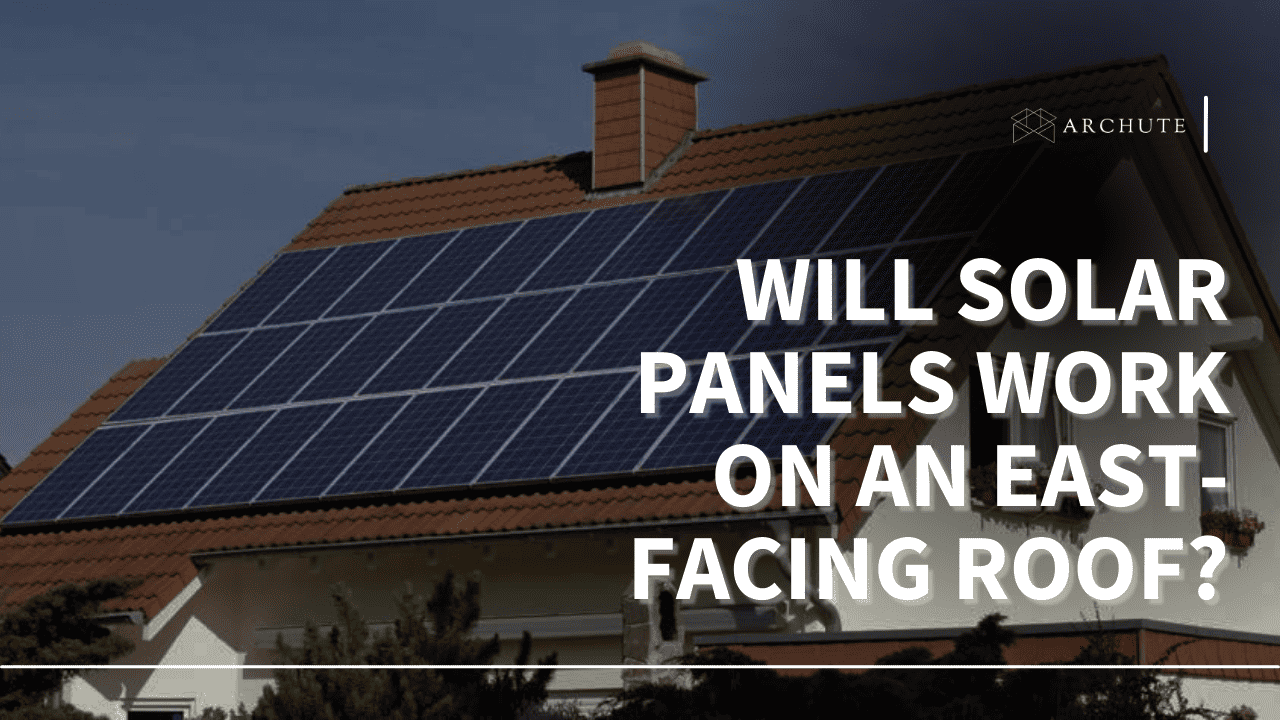Wind energy is one of the most developed forms of renewable energy, and it ideally revolves around the kinetic energy that is produced because of the effect of air currents. During a sunny day, heat from the sun warms up the air which gets lighter until it rises above cold air. The endless cycle between warm air rising to the top and cool air moving to the bottom is what in turn creates wind.
How Wind Energy is Produced

Wind power is harnessed using wind turbines. These turbines are typically large motor blades attached to a generator which are placed on a long support stand. Physically, they look like household fans, but the only difference is that while the fans use electricity to propel air, the turbines generate electricity when wind blows through the fans that are connected to the turbines. The wind energy is transformed from kinetic to mechanical energy which is then converted to electricity usable in homes. Also worth noting is that there are two ways of harvesting wind power.
1. Onshore Wind Farms

This means that the turbines are installed on land on a favorable landscape for wind harvesting. The main advantage of onshore harvesting is that it's a lot cheaper since there's no complexity in installing of turbines. The main downside of onshore though, is the noise that comes with it. Turbines can get really noisy, and they have been known to cause discomfort for some people.
2. Offshore Wind Farms
This is where the turbines are located in the lake or sea to generate power to mainland. The main downside to this is the cost of setting up. The turbines are set up spanning a large area in the sea which makes it expensive to install. They'll need to be firm, to withstand the turbulent storms, to ensure that they always work properly and among other things, have a positive impact to the environment.
While the setup is costly, offshore wind turbines have better advantages. One, is the noise will be far away from homes meaning they won't affect people. Two, the death of birds and bats will be minimized. Three, since it's located in the sea, it's easier to harness since most of the landscape is flat unlike on land where there are terrains and hills, and even high-rise buildings which can reduce the amount of wind.
How Wind Energy is Stored
Wind, just like other renewable energy sources, supplies more energy than market demand. The main downside is that there are very few established ways to store wind energy for future use. First, is its unpredictability, especially in areas where wind is not always constant. As such, storage of the electric energy produced from wind will be paramount. This uncertainty, coupled with how it's a lot more powerful during the night than day, are some of the reasons to store power for later use. In areas where wind is constant, however, electric power generated from the turbines can be fed into the power grid directly.
In domestic cases, it's quite easy because there are lead-acid and lithium-ion batteries to store that extra power. These high-density batteries are increasingly getting advanced as the days go, making them easier to manage. Even at industrial level, companies have tried using large scale batteries to store energy, but the effects have not been so favorable. Cases of battery blow ups due to difference in voltage have been experienced. Also, batteries of this magnitude are expensive and hazardous to some extent not to mention they are not environment friendly (especially if they're disposed).
Despite that, there are some methods that industries are using to save large scale power:
1. Compressed Air Energy Storage
This is where excess power is heated and compressed to air to be stored in underground caverns or large tanks above the ground. The compressed air is burnt along with fuel to change it to mechanical energy which will then be used in generators as electrical energy when the demand for power arrives.
2. Hydrogen Fuel Generation
This works by producing hydrogen with excess power in order to burn it by combining with water through a process called electrolysis. This is a smart approach though the greatest drawback, like all the others, is the initial investment needed.
3. Pumped Hydro
This is where water is pumped upwards in order to use it downhill again. The main downside to this is the initial investment to be used and also the fact that it requires a hill or high ground where there's large amounts of wind and also a hydro power plant nearby or large water bodies. Even without water, hills and wind are almost mutually exclusive. Add the two mills needed (hydro and wind) for installation and you'll realize this is an expensive approach. This method is common in hydroelectric dams. While at the moment large scale storage of wind power is not stable, the future is filled with optimism since some companies are currently trying new ways to make it work.
Uses of Wind Energy
1. Electricity Generation
The wind turbines have rotor blades which convert kinetic energy to mechanical energy through the rotor shaft and then to the generator. The energy is transferred as the rotor spins and the mechanical energy is converted to electrical energy in the generator. It's then transferred to the electrical company substations which step it up to a higher voltage for distribution to homes and institutions. Check out some of the wind power generators available in the market.
2. Pumping Water
Traditionally, windmills were used to pump water used for livestock and farming. Even in recent years, people still use them to pump water in communities and countries. The windmills used for pumping water are easier and more efficient than those used for electricity.
The wind propels the rotor blades which in turn move to produce motion or kinetic energy. This motion then facilitates the movement of a rod inside the well or borehole that pulls water into dedicated cylinders until the water is forced up the pipe and is ready to be fetched. Repetition of this process results in free-flowing water.
3. Transportation
Wind power has equally been crucial in transportation. Long ago when there were no turbine-powered ships, people used wind power to sail and navigate the sea. The trade winds released energy that propelled the ships and their cargo across oceans. In recent years, modern sailors have seen the benefits of using wind power too. They have installed large kites to act as propellers which save a lot of fuel in the long run.
4. Food Preparation
While in the past windmills were used to process grains like millet, in recent years they can be used to process foods in large scale for example wheat flour. Thanks to electricity and ease of installing several windmills, factories can now manufacture food in bulk in ease.
5. Sports
Several sports are propelled by wind for them to work. Sports like kite and wind surfing, sailing and kite boarding need to be in favor of the wind for you to practice. Some like kite surfing and sailing require stronger winds to enjoy the ultimate experience.
As you have noticed, you can use wind power in different ways. You can even use it to charge appliances in your home from small things like phones and laptops to bigger equipment like your lawnmower. If you have a stronger turbine which produces more power, then you can even use it for bigger things. Like solar, it's best to own a battery to store your energy for times when the wind speeds will be low.
Impacts of Wind Power to The Environment
Wind power is a clean renewable energy without effects associated with greenhouse gases such as coal. It is sustainable and friendly to environment and the effects associated don't cause any global warming. That said, the wind turbines have some negative impact on the environment.
1. Bird and Bats Mortality
The first wind turbines that were installed cause a lot of death to birds and bats that flew around. This is because they didn't consider the rotating blades could have any negative impact to the birds. The modern wind turbines though, have put that into consideration and have predatory sensors installed to prevent the birds from getting close to them. While there are no estimated figures, it's presumed that those deaths are less than those caused by humans either by hunting and shooting.
2. Change of Landscape
Some people find lands with wind turbines to be beautiful while others find them another negative impact on the environment. They only see machines that are ruining the natural landscape. Turbines, especially in historical and tourist places, can be an eye sore since they're disrupting the normal view of the place. Since most wind farms are private, the places have even been set as tourist hotspots where you're taken a guided tour around. You can even find it's a camping and hiking venue where you'll enjoy some of your favorite activities. Turbines which are made of the same height and length and are aligned may have a more beautiful landscape than those which are placed spontaneously.
3. Noise Pollution.
It's estimated that a turbine in a 300m range will produce about 45dB which is slightly higher than the noise of a refrigerator. This means that if you're in a place closer to wind turbines, you'll be affected than someone who's 1.5km from a wind farm since at that distance the noise is barely audible. Some people reported to experience negative health effects that were caused by the turbine noise.
Engineers handled that and designed modern wind turbines to ensure that there's almost no noise made by turbines despite being close to your residence. They have sensors that measure the speed of wind so as to increase or decrease accordingly without necessarily producing a lot of noise.
4. Shadow Flicker and Reflection
This is when you're walking down the road then around you there are turbine blades rotating thereby affecting your eyes. The reflection, on the other hand, is when the blades reflect under the sun causes them to shine brightly and momentarily blind you. The changes in light intensity caused by the turbines is a bother to some people especially when the sun is too bright, and the blades are rotating fast. However, engineers easily solved this problem by choosing a better finish for turbine edges.
5. Loss of Habitat for Some Species
Since large amounts of land need to be cleared for those wind farms to be created, the previously existing animals are forced to move to a safer place. The displacement of these animals could make them highly exposed to their predators. On the flip side, the land used by wind farms could be used for other activities as well. Since over 90% is never used, it could be maximized for agriculture, for animal grazing or even just left as an open space.
6. Negative Effects for Air Traffic Control
When the farms are set up near army bases the turbines can have negative impact since they may lose control over an aircraft due to loss of signal near the farm. This means that the wind farms have limits as to where they can be built to avoid overlap with other institutions.
Final Thoughts
While the negative impacts may make it seem like wind is not a great renewable energy, it helps to know that these are not effects of wind energy. These are the effects of the turbines which propel the wind. If technology is right, these effects are manageable and with time will improve. Some of them have already been corrected which makes us hopeful that the current problems facing the turbines will be non-existent in a few years.
Also, wind is an energy that can easily be substituted with other types of energy. For example, you may find that in your area it's sunny in some seasons and other seasons the wind is high. You can install both solar and wind systems to tap both of them when they're in high production. This is great for the person who wishes to install the two types for maximum power harnessing.

